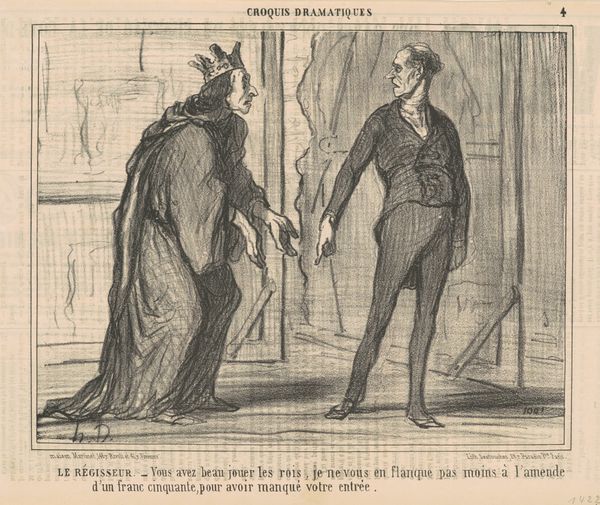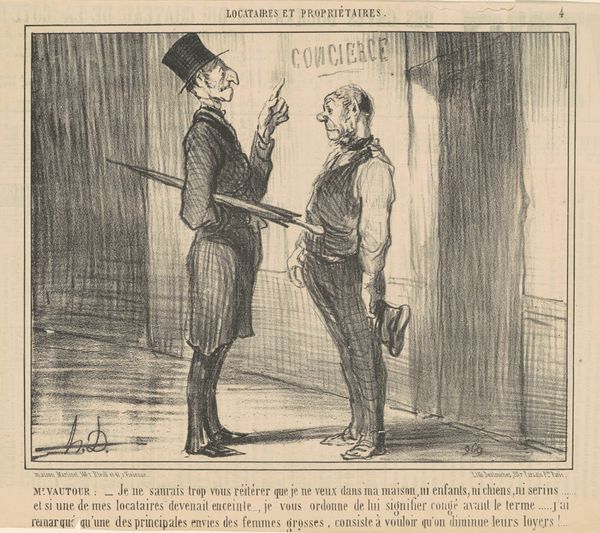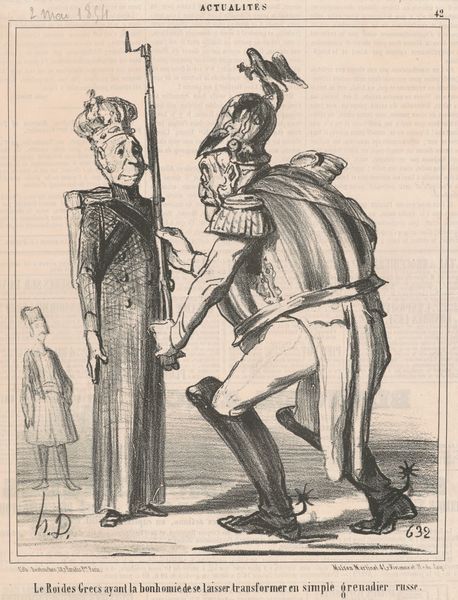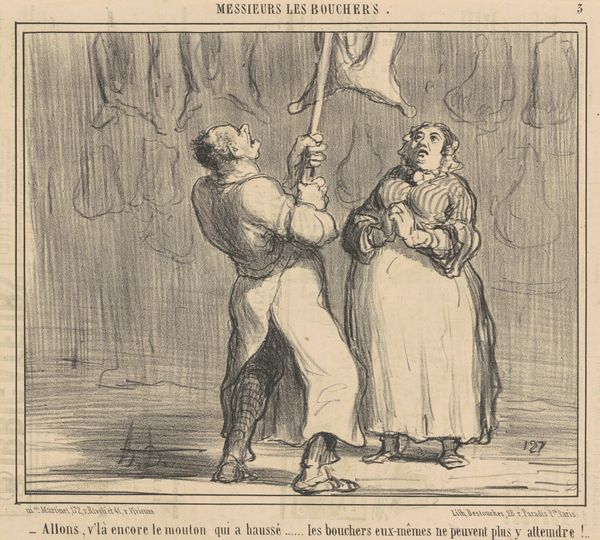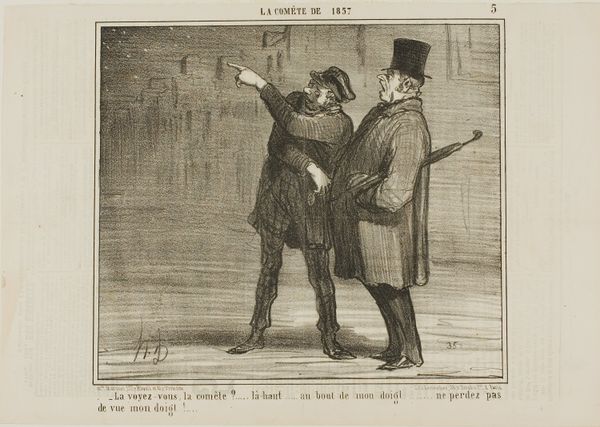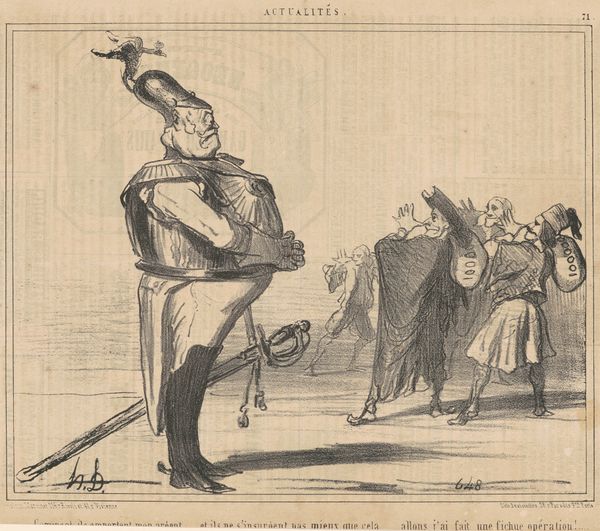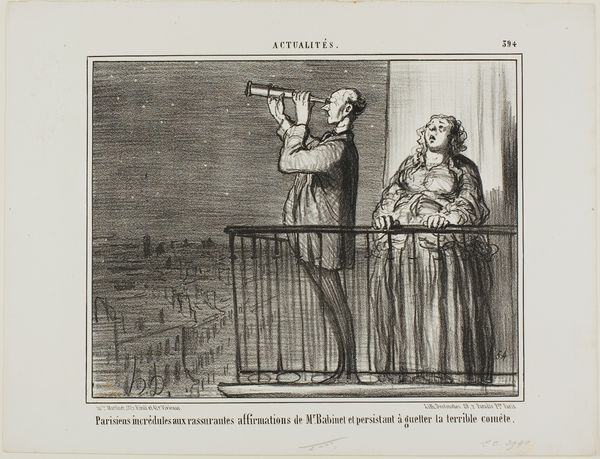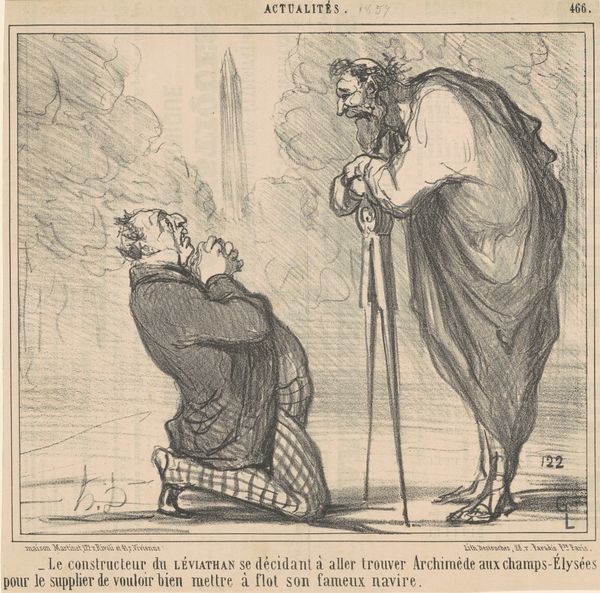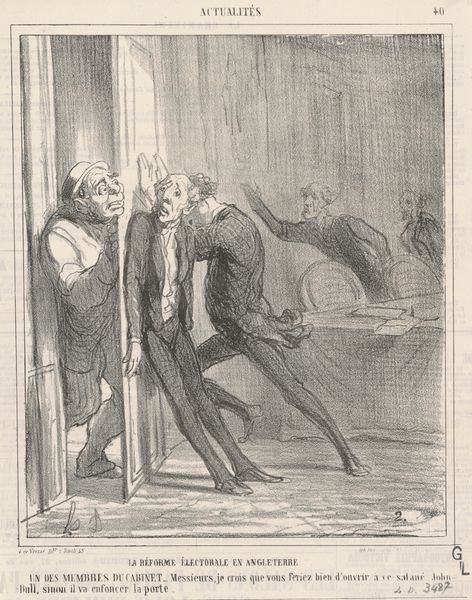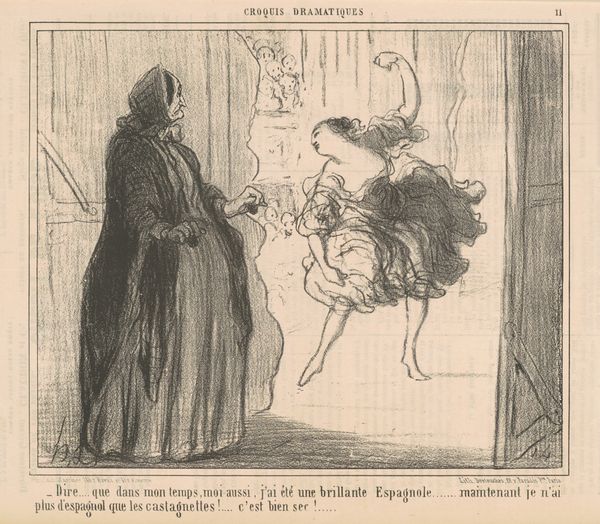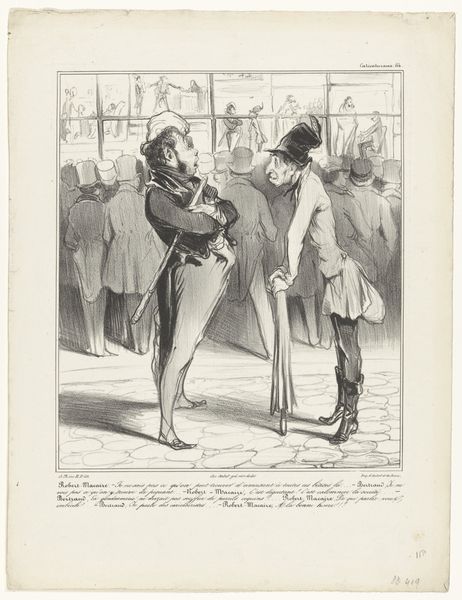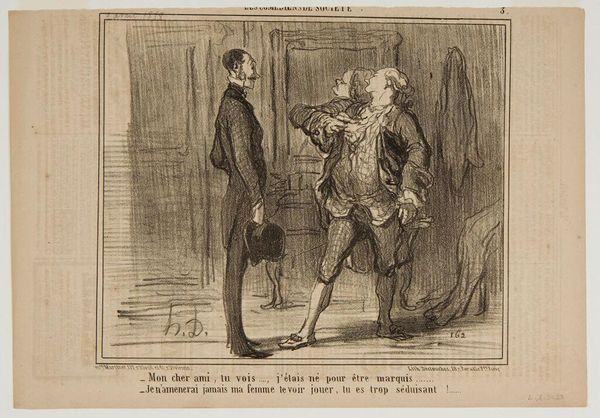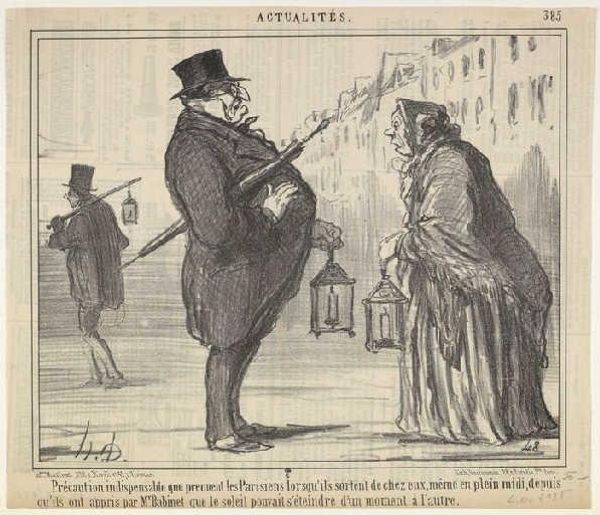
lithograph, print
#
lithograph
# print
#
caricature
#
romanticism
#
genre-painting
Copyright: National Gallery of Art: CC0 1.0
Curator: Daumier's lithograph, "Comment, madame ... J'ai l'imprudence...", from the 19th century, is particularly striking in its visual rhetoric of power and gender. Editor: It's amazing how much story he can pack into a simple print. The expressions are so exaggerated! What strikes you most about this piece? Curator: Beyond the obvious caricature, consider the setting, the power dynamics, the way Daumier uses visual language to comment on societal inequalities. What narrative do you think is being created here, who is speaking and who is being spoken over? Editor: Well, he certainly seems to be asserting his dominance, literally pointing her out the door, or rather trying to shame her, based on the...situation she finds herself in. It feels like a critique of the way women's bodies, particularly pregnant bodies, were policed. Curator: Precisely. Daumier doesn’t just present a scene; he critiques the very fabric of 19th-century French society, particularly the hypocrisy surrounding morality, class, and the treatment of women. Think about the lithograph as a medium. It's easily reproducible, widely distributed - essentially early meme culture. Editor: So, he's not just telling a story; he is using it as commentary. It's fascinating to consider the lithograph in this context—as a form of social activism. It highlights how even seemingly simple artworks can unpack complex social issues. Curator: And it is through these types of art objects that history allows its audience an intersectional view into the issues.
Comments
No comments
Be the first to comment and join the conversation on the ultimate creative platform.
